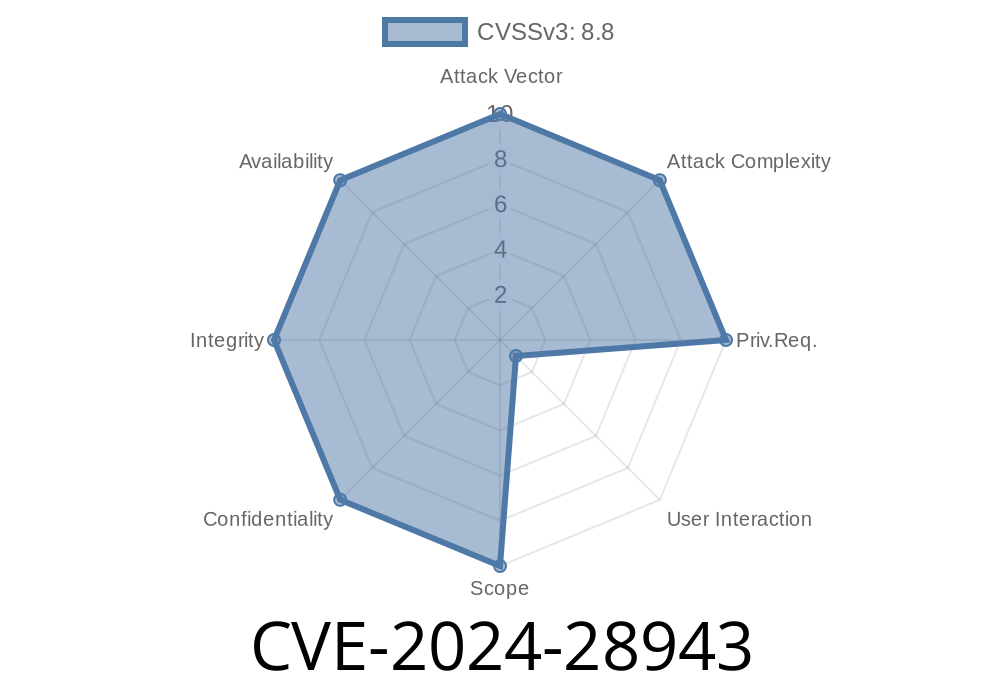A recent critical vulnerability, CVE-2024-28943, was discovered in the Microsoft ODBC Driver for SQL Server. This vulnerability exposes a glaring risk for servers running these drivers, allowing attackers to remotely execute arbitrary code upon successful exploitation.
In this post, we will discuss this vulnerability in detail, including diving into the affected components, exploring the exploit itself, and providing resources to find more information. The target audience for this post is IT professionals, server administrators, and information security enthusiasts who want to stay vigilant against this critical threat.
Vulnerability Details
The vulnerability exists in the Microsoft ODBC Driver for SQL Server due to the improper handling of specific SQL queries. In particular, a carefully crafted SQL query could create a Buffer Overflow in the driver, which can then overflow the previously allocated memory buffer.
Attackers can leverage this vulnerability to remotely execute arbitrary code within the context of the targeted server running the vulnerable driver.
Exploiting CVE-2024-28943
The primary attack vector used for exploiting this vulnerability is SQL injection. An attacker can exploit a vulnerable ODBC driver by sending a specially crafted SQL query, which overflows the memory buffer and executes malicious code on the server.
Here is an example of exploiting the vulnerability using a crafted SQL query
-- Setup a fake, malicious table
CREATE TABLE malicious_table(id int, name varchar(50));
-- Craft a string that, when concatenated, will overflow the memory buffer
DECLARE @overflow_string varchar(800);
SET @overflow_string = REPLICATE('A', 800);
-- Exploit the vulnerability by sending the crafted SQL query
SELECT * FROM malicious_table WHERE name = @overflow_string;
In this example, we first create a fake table with malicious data. We then declare a string variable containing a large number of characters. The SQL query is designed to overflow the memory buffer when the string variable is used within a SELECT statement. An attacker would replace the large string with the malicious payload, which would then be executed on the target server.
Mitigation and Resources
Microsoft has already released patches to fix this vulnerability. To avoid being exposed to CVE-2024-28943, you should download the latest ODBC Driver updates and apply the patches as soon as possible. You can find the patches and more information on the Microsoft Security Response Center page.
Additional resources for understanding and mitigating this vulnerability include
- NIST National Vulnerability Database - CVE-2024-28943
- Microsoft - How to update the ODBC Driver for SQL Server
Conclusion
CVE-2024-28943 highlights the importance of understanding, detecting, and mitigating vulnerabilities within server environments. It also underscores the critical nature of continuous patch management and system updates to protect against remote code execution threats. We hope this post has provided you with an understanding of the CVE-2024-28943 and its implications while pointing you towards resources to secure your server environment.
Timeline
Published on: 04/09/2024 17:15:56 UTC
Last modified on: 04/10/2024 13:24:00 UTC
